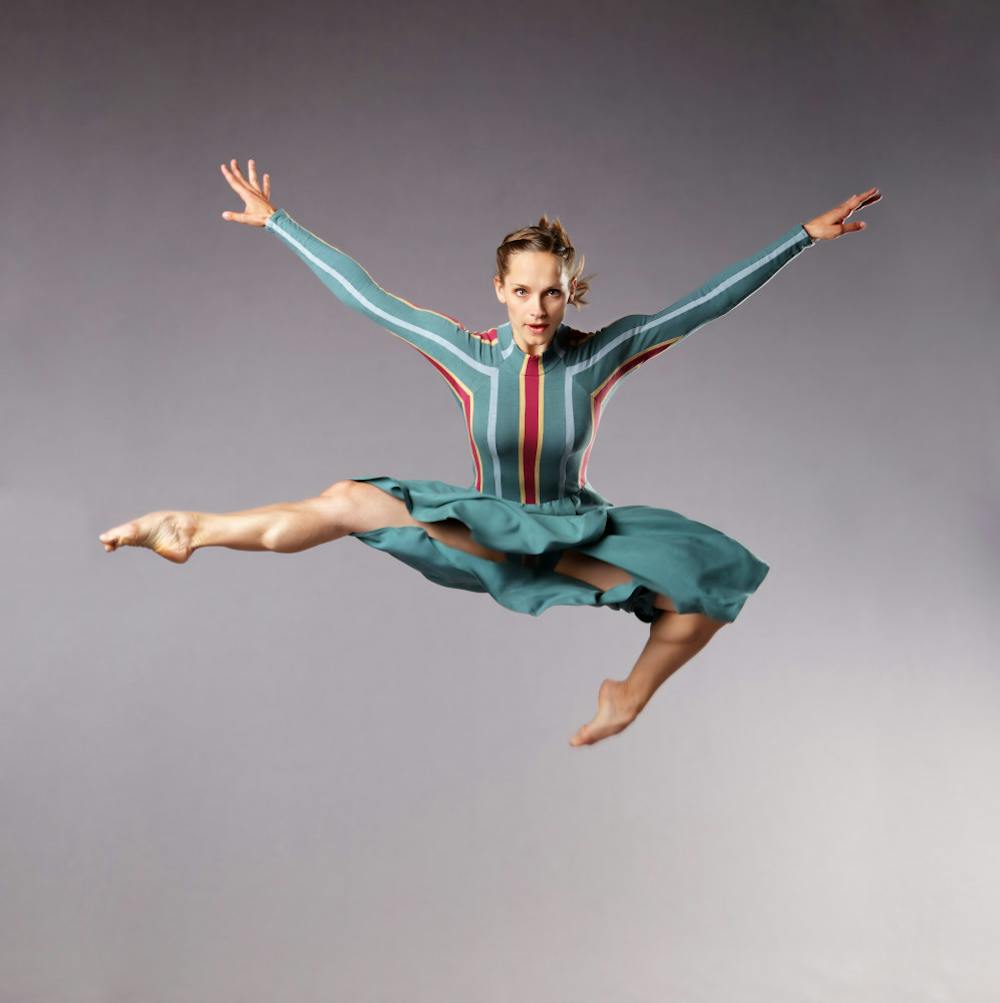A few days before Sola was to be performed at the Middlebury College Dance Theatre this past weekend, I received an email from the box office stating that the Friday night show would be an abbreviated version of the full concert. I wondered what their apology was really for — and considered that if I had not been notified I might not have known that the concert was any different from what the dancers had intended it to be. I hadn’t yet formed an expectation of what I would be getting from the show, and so hearing that it would be different from the dancers’ intended performance was odd — because how was I to know what the intended performance was supposed to be, since it hadn’t happened yet?
When I attended on Friday night I was part of a small audience, and quite a few people had expressed to me their desire to see the full concert instead of an abbreviated version. While I understand that in creating a performance, there is an element of wholeness created through the rehearsal and choreographic process, Sola was an evening of solo works choreographed for and by women, and on Friday, two of the six dancers, Andee Scott and Bliss Kohlmyer, were unable to be in the show. I wondered if there was a sensation of disappointment rooted in not-getting-what-you-paid-for. And yet this is art — what does anyone intend to “get” out of it? My mind roamed from ideas of acquisition and consumerism to a simple feeling of fear of missing out on the fullest performance experience. Does this feeling come from a kind of personal efficiency — that we can’t possibly “waste” a moment on something incomplete or imperfect?
In exploring my perspective of dance since arriving at the College and studying the art form more seriously, I have come to the conclusion that for me, appreciating art is not about getting something out of it or understanding it. Rather, it is about the experience — how a performance or a work makes you feel, the thoughts or images that it inspires and the awareness that both the artist and the viewer are intimately involved in that interaction. But this kind of experience necessitates openness on the part of the viewer and a willingness to let oneself be taken in to access the raw interplay of perception and expression.
This interplay was particularly strong and verging on the uncomfortable with Amy Chavasse’s 2014 work from the University of Michigan, “Conspiracy Going,” as the flow of often nonsensical spoken text challenged one’s sense of what words signify, and how disorienting it can be when words do not go together in their expected patterns of usage. The text was adapted from an anonymous blog post commenting on a 2008 performance by Chavasse.
An intensely effective moment of this piece was when Chavasse repeated a single phrase with one movement corresponding to each word, beginning by stating each word slowly with the motion, and gradually speeding up to form one cohesive phrase of word and motion that took on meaning gradually as one came to see how they went together. It provoked the question of how we perceive language and meaning, asking whether words make any sense in distinctive units or if they only gain meaning in relation to other words and underlying contextualization.
Assistant Professor of Dance Tzveta Kassabova presented her 2009 work “Letter (to Ed),” a deeply emotive piece in which her virtuosic choreographic and performance ability left some audience members in tears. Her performance was punctuated with several moments in which her body was still, but her gaze to a space beyond the audience conjured the sensation of great distance, contrasting with powerful and reaching movements in the piece that felt as if they traversed such a distance. One of those moments was when Kassabova leapt up with her arms extended outwards and executed a mid-air contraction and outward kick that felt like a burst of energy from her center.
Pamela Pietro of the New York University Tisch School of the Arts performed her 2014 piece “You are That” and also utilized intentional gaze to seize the audience’s attention, which would not have been difficult in the first place because her stage presence demanded it. In one particularly striking moment, Pietro directly faced the audience, intently but expressionlessly staring out and repeatedly circling her hips. The audience experienced that repetitive sensation of when a motion or a word’s constructed significance or connotation begins to wear off — and we begin to question anew what it might mean.
“In Her Solitude: Lest We Forget” is a 2009 piece choreographed by Ursula Payne and performed by Mary Williford Shade of Texas Woman’s University, in which Shade interacted with a white rocking chair. For me this work gained a very strong symbolic arc when, after Shade’s movement conversation with the rocking chair as an object and a partner, she actually sat down on the chair for just a moment, only to rise again rapidly, provoking me to think that perhaps she realized that she could not occupy the same chair as whoever came before, and that she had to create and continue her own dance.
In the abstract art form of modern dance the viewer has the opportunity and the challenge to experience or interpret meaning to the movement as they will, if only they trust and take the risk of opening him or herself to that interaction with the performers.
Theatrical Dance Probes Abstract Ideas

Comments



